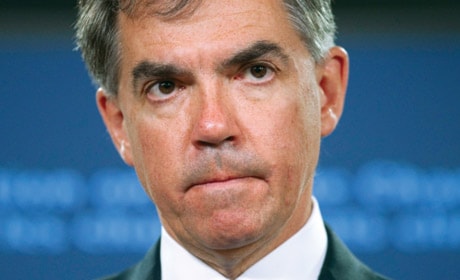OTTAWA — The federal government is adopting tough new regulations aimed at cleaning up coal-fired electricity generation.
“Most of Canada’s coal-burning electricity plants are both dated and dirty,” Environment Minister Jim Prentice said Wednesday.
“We have a responsibility as a country to reduce our carbon emissions.”
Thirteen per cent of Canada’s total greenhouse-gas emissions come from coal-burning electricity-generation units.
There are 51 of them in Canada, and 33 will come to the end of their economic lives by 2025.
The proposed regulations will impose stringent performance standards on new coal-burning power plants, as well as older ones that are looking to extend their operating lives.
“Our regulation will be very clear: when each coal-burning unit reaches the end of its economic life, it will have to meet the new standards or close down — no trading, no offsets, no credits,” said Prentice.
Established after consultations with industry and the provinces, the standard will be based on parity with the emissions performance of high-efficiency natural-gas generation.
It aims to promote the replacement of older coal-fired units and encourage investment in cleaner generation technologies such as high-efficiency natural-gas generation and renewable energy, as well as carbon capture and storage.
Prentice said the standard will represent an improvement in emissions of about 60 percent per gigawatt hour generated.
Nineteen of the 33 oldest units do not currently meet the proposed new standards, Prentice added.
Units that incorporate carbon capture and storage will be exempt from the standards until 2025.
The government says regulating coal-fired electricity generation will reduce greenhouse-gas emissions, improve air quality and provide regulatory certainty for industry.
Marlo Raynolds, executive director of the Pembina Institute — a sustainable-energy think tank — welcomed the announcement.
But she cautioned “a lot of things can change between an announcement of intent and having actual regulations come in force,” especially in the face of a powerful industry lobby.
Key details of the proposal need to be strengthened, Raynolds said.
“When it comes to cleaning up our electricity system, the other side of the coin is a massive scale-up in government support for renewable energy, along with energy conservation and efficiency,” she said.
“Unfortunately, we have seen federal support for those priorities end in recent budgets, in stark contrast to President Obama’s approach.”
TransAlta Corp. (TSX:TA) said it supports the need to lower power-generation emissions.
President and CEO Steve Snyder said there are “opportunities” to replace our oldest coal plants with a mix of natural gas, clean-coal technology and renewable energy.
“However, we need to also make sure this transition is done in a careful and orderly fashion to maintain the critical reliability of our electricity infrastructure,” Snyder said in a statement.
The new policies are to come into effect July 1, 2015. Along with provincial efforts and corporate commitments to close older plants, they will reduce emissions by about 15 megatonnes — the equivalent of taking about 3.2 million vehicles off the road, he said.
In 2007, hydroelectric power produced about 59 per cent of Canada’s total electrical power generation followed by fossil fuels — coal, oil and natural gas — at 25 per cent, nuclear energy at 15 per cent, and other sources such as wind and bioenergy accounting for the remaining one per cent.
Under its Copenhagen Accord commitments, Canada aims to reduce greenhouse-gas emissions by 17 per cent below 2005 levels by 2020.
Also in keeping with its accord commitments, Canada is investing $400 million for climate-change efforts in the world’s poorest and most vulnerable countries this fiscal year.
The money helps developing countries adapt to the effects of climate change, including clean energy development and delivery, efforts to address deforestation and to enhance sustainable agriculture.
